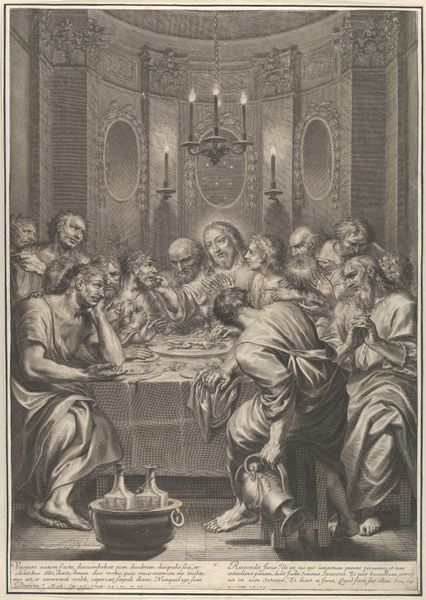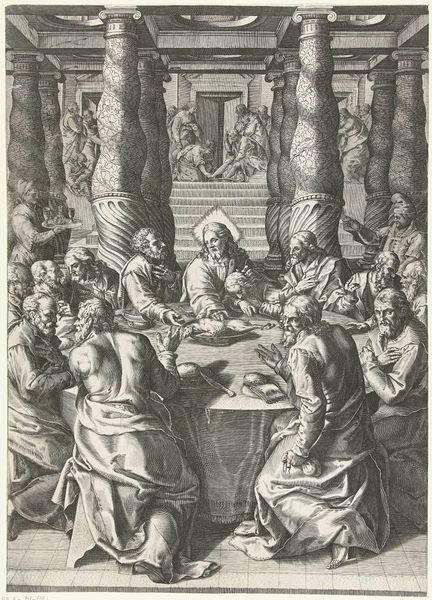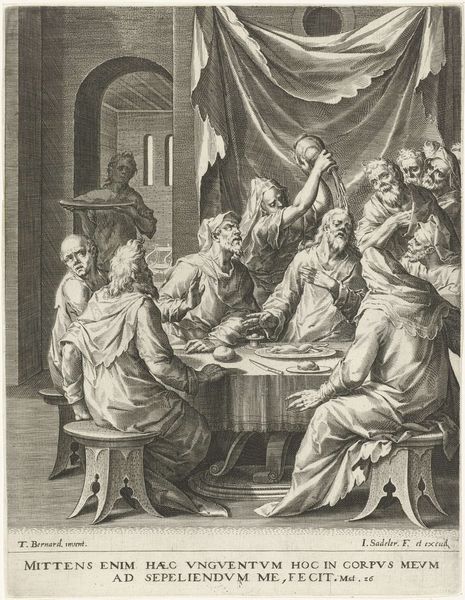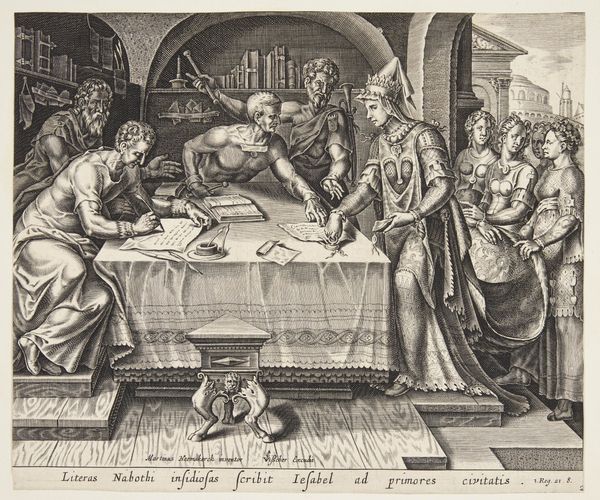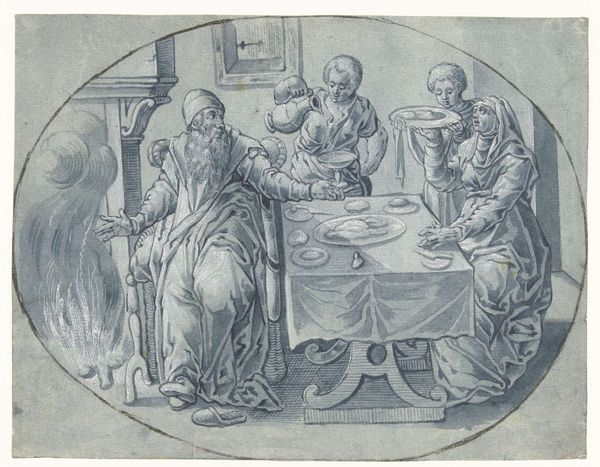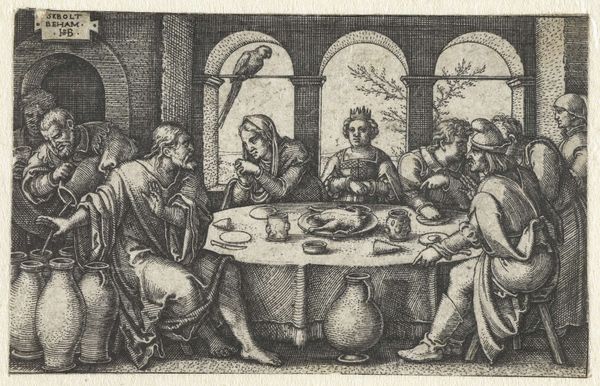
print, engraving
# print
#
mannerism
#
figuration
#
history-painting
#
engraving
Dimensions: height 190 mm, width 282 mm
Copyright: Rijks Museum: Open Domain
Editor: This is an engraving entitled 'The Last Supper,' made by an anonymous artist sometime between 1570 and 1600. The textures created by the engraving are striking, creating intense light and dark contrasts. What catches your eye in terms of the visual structure of this piece? Curator: Note the artist's engagement with Mannerist conventions. The composition eschews classical balance, favoring dynamic asymmetry. The figures are tightly packed, their gestures and expressions exaggerated, resulting in a palpable sense of emotional unrest. Notice, also, how the dramatic use of chiaroscuro further heightens the emotional intensity. Where do you see evidence of Mannerist techniques at play? Editor: The elongated bodies, the almost theatrical poses – they definitely depart from earlier Renaissance ideals of harmony and proportion. And there’s so much activity, it’s quite different from, say, Leonardo’s serene version. Curator: Precisely. Leonardo achieved equilibrium. Here, the surface vibrates. Light doesn’t model form naturally; instead, it creates highlights and shadows that emphasize the artifice. Consider how the composition uses horizontals and verticals to convey emotion. Editor: I see what you mean. The lines formed by the table and the figures behind it create a stage-like space, heightening the drama. This analysis is so interesting and changes my view on the subject matter to notice those lines. Curator: Examining the artwork's visual devices underscores how the artist manipulates form to convey complex emotion and meaning, transcending a simple depiction of the scene. A strong formal execution reveals the complexities of interpretation. Editor: Thanks! Paying closer attention to formal composition provides a new framework to understand visual art.
Comments
No comments
Be the first to comment and join the conversation on the ultimate creative platform.
